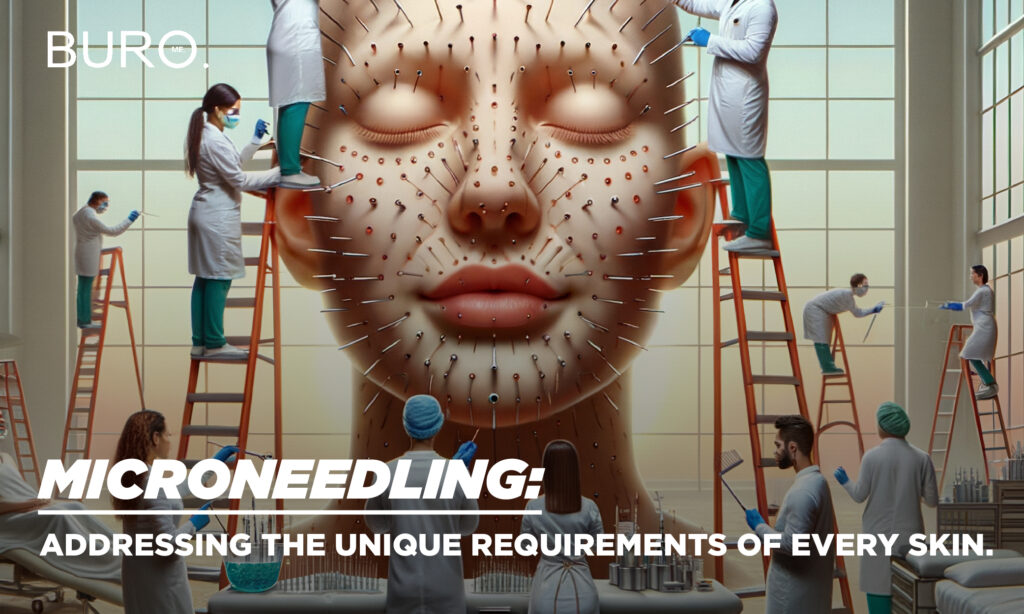According to Dr. Gabriel Serrano from Sesderma Clinic, the collagen induction technique involves various mechanisms, one noteworthy aspect being the regulation of cellular membrane electric potential. Also recognized as collagen induction therapy, microneedling is a procedure that entails the repetitive perforation of the skin using sterile micro-needles. Originating in 1995 with the development of “subcision” by Orentreich & Orentreich, this technique involves dermal puncture to release the dermis and aid in the reconstruction of connective tissue beneath scars or wrinkles. Microneedling is a minimally invasive and cost-effective method used to address a range of aesthetic and dermatological conditions. At its core, microneedling relies on the micro-trauma caused by needle penetration, triggering dermal regeneration.
Collagen Stimulation: Microneedling promotes collagen production, a crucial protein that maintains skin elasticity and firmness. The tiny needles create micro-injuries, triggering the body’s natural healing response and encouraging collagen synthesis.
Reduced Fine Lines and Wrinkles: By stimulating collagen, microneedling helps diminish the appearance of fine lines and wrinkles. This can lead to smoother, more youthful-looking skin over time.
Enhanced Product Absorption: The micro-channels created during microneedling allow for better absorption of skincare products. This means that the active ingredients in serums and creams can penetrate deeper into the skin, maximizing their effectiveness.
Scar Reduction: Microneedling is effective in minimizing the appearance of scars, including acne scars and surgical scars. The process encourages the regeneration of skin cells, leading to a smoother skin texture.
Improved Skin Texture: The micro-injuries caused by microneedling stimulate the production of new skin cells, resulting in improved overall skin texture. This can be particularly beneficial for individuals with rough or uneven skin.
Minimized Pore Size: Microneedling can contribute to reducing the size of enlarged pores. By promoting collagen synthesis and enhancing skin tightness, the procedure helps create a smoother skin surface.
Safe for Various Skin Types: Microneedling is generally safe for various skin types and tones. Unlike some other skin treatments, it poses minimal risk of pigmentation changes or adverse reactions.
Minimal Downtime: Compared to more invasive procedures, microneedling typically involves minimal downtime. Patients may experience some redness or mild swelling immediately after the procedure, but these effects usually subside within a few days.
Versatile Treatment: Microneedling can be used to address a range of skin concerns, making it a versatile treatment option. It is commonly employed for facial rejuvenation but can also be applied to other areas of the body.
Long-lasting Results: With a series of sessions, microneedling can yield long-lasting results. The gradual improvement in skin texture and appearance continues over several weeks to months, making it a sustainable option for those seeking lasting skincare benefits.




